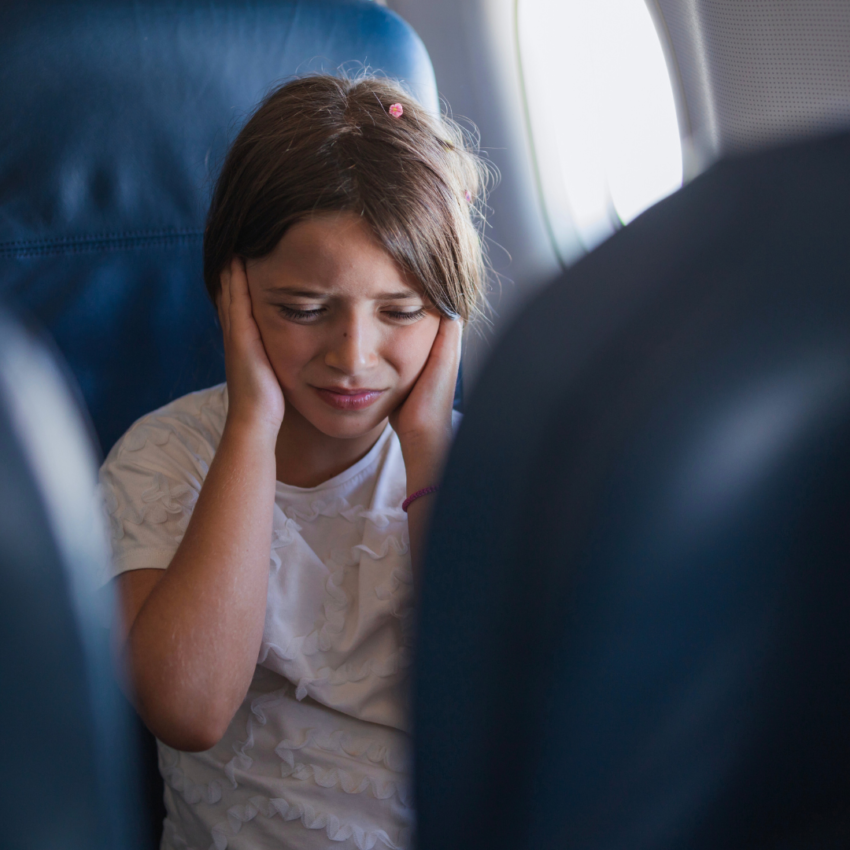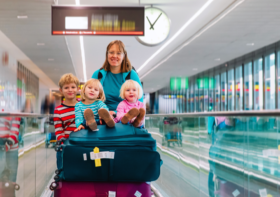How to Survive Airport Stress with Kids: Essential Tips for a Smooth Journey

Traveling through an airport can evoke significant stress, especially for families with kids. Having a well-planned approach to airport logistics can greatly reduce this stress and make the journey more enjoyable for everyone. From choosing the right time to arrive to engaging activities that keep children occupied, each step can lead to a smoother experience.
Parents often face challenges such as long security lines and unexpected delays. By preparing children ahead of time and involving them in the travel process, stress can be minimized. This engagement not only helps children understand what to expect but also gives them a sense of control amid the hustle and bustle of the airport environment.
Simple strategies like packing snacks, bringing entertainment options, and maintaining a calm demeanor can also contribute to a more positive atmosphere. By taking proactive measures, families can navigate airport stress effectively, making travel with kids a less daunting endeavor.
Preparing for the Airport
Preparation can significantly ease the stress of traveling with children. This involves careful packing and understanding airport security procedures to ensure a smoother experience.
Packing Smart and Light
Packing efficiently is crucial when traveling with kids. A well-organized carry-on can make all the difference. Consider the following tips:
- Checklists: Create a checklist for everyone’s essentials. Include items like snacks, toys, and extra clothing.
- Limit the Load: Select only necessary items. Aim for one carry-on bag per person, if possible.
- Organize: Use packing cubes or pouches to keep similar items together. This simplifies the process of finding needed items during the journey.
- Accessibility: Place items that may be used during the flight, like books or devices, at the top of your bag.
By thoughtfully selecting and organizing items, travel becomes less cumbersome.
Navigating Airport Security
Understanding airport security procedures can help reduce anxiety. Here are the key steps to follow:
- Prepare Documents: Ensure all required documents, such as IDs and tickets, are easily accessible.
- Educate Kids: Inform children about security protocols so they understand what to expect. This includes removing shoes, belts, and placing items in bins.
- Pack Smartly: Keep liquids and gels in accordance with regulations. Use small containers (3.4 ounces or less) and ensure they fit in a quart-sized clear bag.
- Arrive Early: Aim to arrive at the airport with sufficient time to spare. This allows for unforeseen delays and keeps the mood relaxed.
By familiarizing oneself with the security process, families can navigate it more efficiently.
Engaging Kids During Waiting Periods
Keeping children occupied during waiting times at the airport can alleviate stress for both parents and kids. Engaging activities can transform downtime into enjoyable moments, making the travel experience more manageable.
Interactive Activities and Games
Interactive activities can turn waiting into a fun experience. Simple games like I Spy or 20 Questions require no materials and can engage children for extended periods. Creating a scavenger hunt using items found in the airport can also be enjoyable.
Parents can bring along comfort items such as small toys or books. Snack time can double as an activity; parents can encourage kids to create fun shapes with snacks, making them excited to eat.
Consider packing a travel-sized game like Connect Four or a deck of cards. These games encourage interaction and keep spirits high while waiting.
Utilizing Technology
Technology can be a helpful tool in managing airport waiting periods. Portable tablets or smartphones loaded with educational apps or games can keep kids entertained. Selecting age-appropriate content, such as interactive storytelling apps, can provide a fun and engaging experience.
Parents should locate charging stations at the airport to ensure devices remain powered. This is crucial for maintaining entertainment during delays. Many airports offer free Wi-Fi, allowing access to streaming services for movies or shows.
Using headphones can help minimize distractions for others while providing a focused experience for children. Downloading content before the trip ensures entertainment without needing an internet connection.
Handling In-Flight Challenges
Traveling with kids can be challenging, especially during the flight. Comfort measures and addressing common issues like ear pain can enhance the travel experience for both parents and children.
Comfort Measures in Tight Spaces
Airplane seating arrangements can be cramped, making it essential to prioritize comfort. Selecting seats wisely can help; window seats offer views and a place to lean, while aisle seats provide easier access to the restroom.
Snacks play a crucial role in maintaining a child’s mood. Pack a variety of snacks to manage hunger without relying on limited in-flight options. Use small, resealable bags for easy access.
In-flight entertainment systems can be a lifesaver. Before the flight, check if the airline offers kid-friendly movies and games. Download games or shows on personal devices as a backup, ensuring they work offline.
Managing Ear Pain During Takeoff and Landing
Ear pressure is a common discomfort for children during takeoff and landing. Parents can help alleviate this by encouraging yawning or swallowing.
Chewing gum or sucking on hard candies can assist in equalizing ear pressure. For younger kids, offer a bottle or pacifier to help them swallow.
Timing is key when it comes to snacks. Providing them during ascent or descent can encourage swallowing, which aids in pressure equalization. It’s helpful to be prepared with these strategies to ensure a smoother experience.
Ensuring a Smooth Arrival
Navigating the airport after a flight with children can be challenging. Planning deplaning strategies and efficiently dealing with checked luggage can minimize stress and enhance the experience for everyone involved.
Deplaning Strategies
Timing is essential when deplaning with kids. Families should consider boarding last to allow other passengers to exit first. This reduces congestion and gives children time to gather their belongings without feeling rushed.
Upon arrival at the gate, the family should ensure everyone is collected and ready to exit. Parents can assign simple tasks to children, such as checking for personal items or gathering snacks. A designated meeting point outside the aircraft helps keep everyone organized and avoids any confusion.
Having transportation arrangements planned in advance ensures a swift transition. Whether using a rental service or ride-sharing, clear communication about pickup locations minimizes uncertainty. Look for signs and be aware of your surroundings while guiding the children.
Reuniting with Checked Luggage
After deplaning, finding checked luggage can be streamlined with a few strategies. Parents should identify the baggage claim area on the airport maps and have everyone follow established meeting points. Knowing where to go reduces anxiety and keeps the family together.
Using luggage trackers or brightly colored luggage tags helps to identify bags quickly. Parents should stay close to the carousel and engage kids with activities or rewards while waiting. Keeping children entertained can ease the tension in crowded areas.
Once the luggage is collected, it is advisable to have a quick check of all bags before leaving. Ensuring that nothing is left behind provides peace of mind. Finally, coordinating with any pre-arranged transportation can facilitate a seamless exit from the airport, making the journey to the next destination much smoother.




Leave a Reply